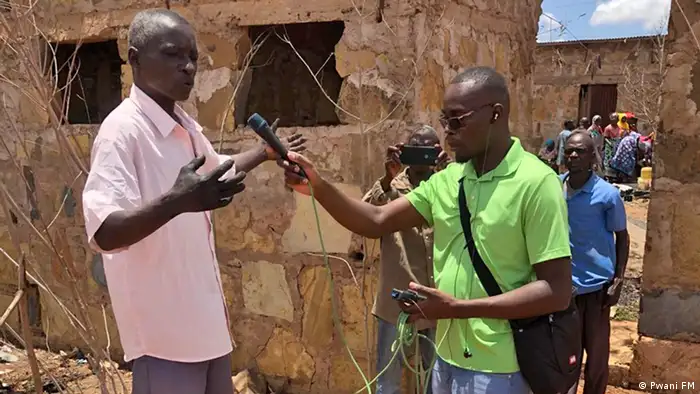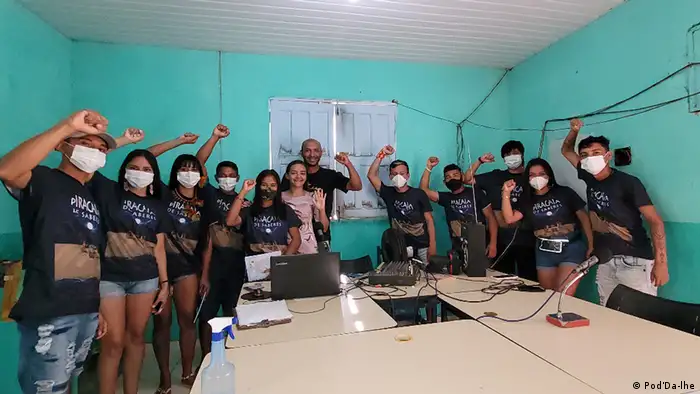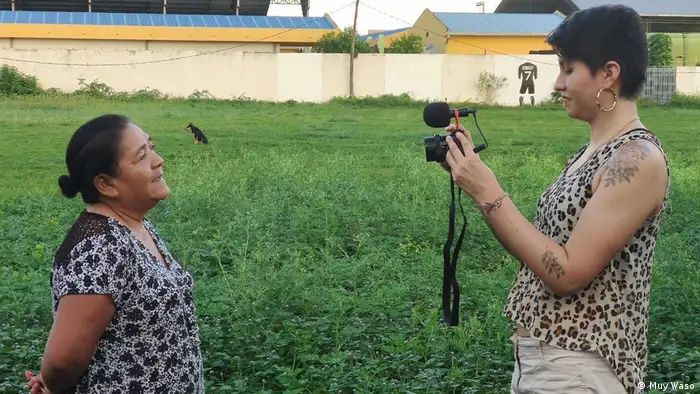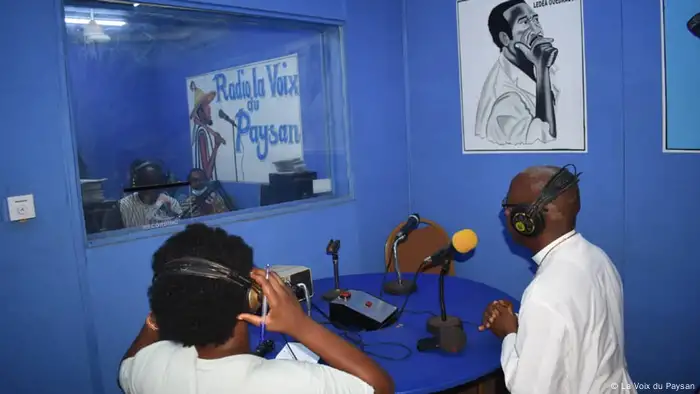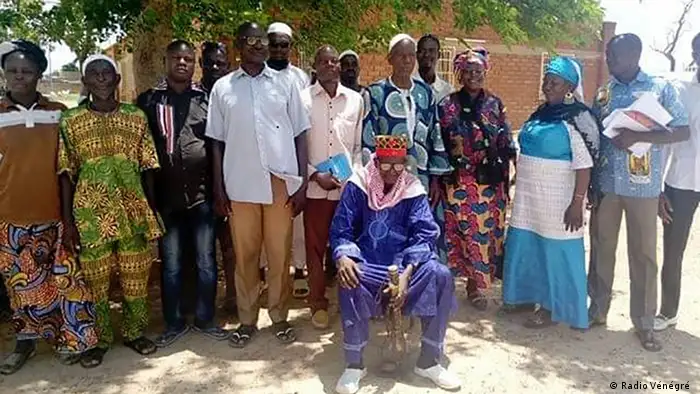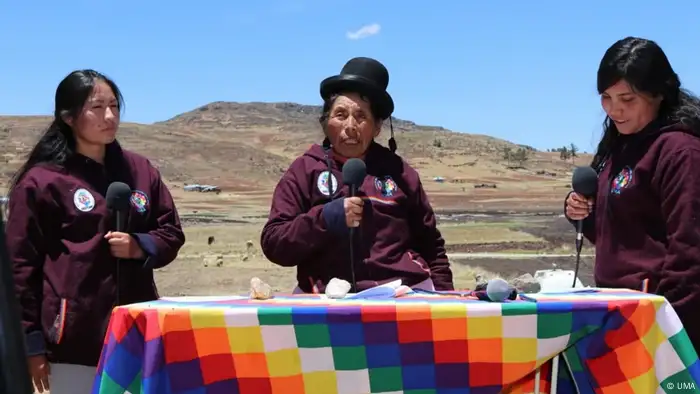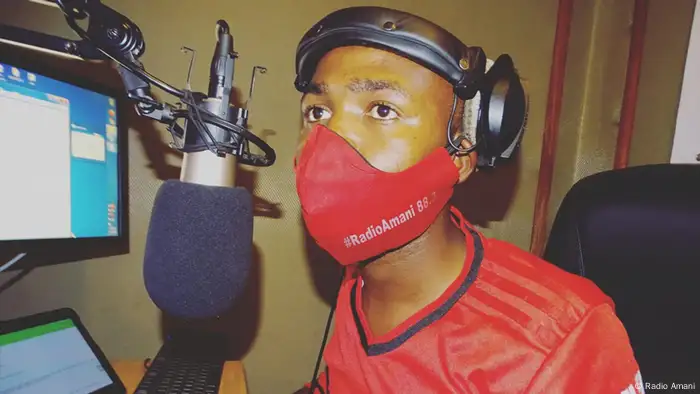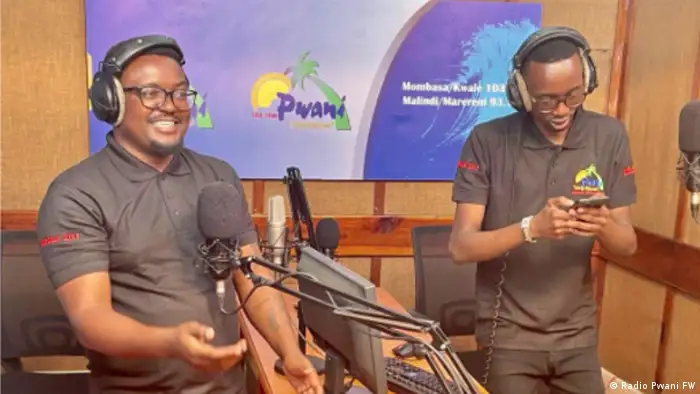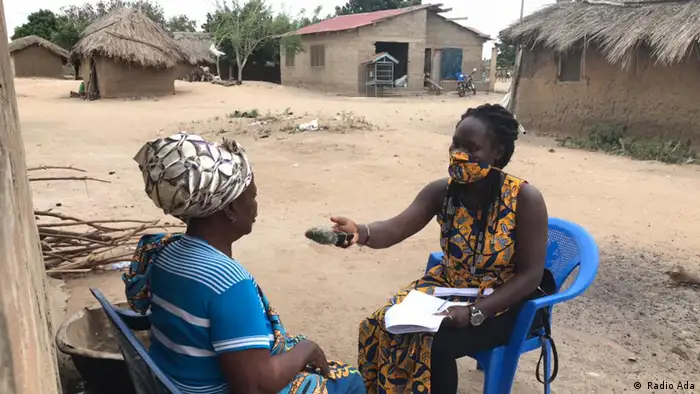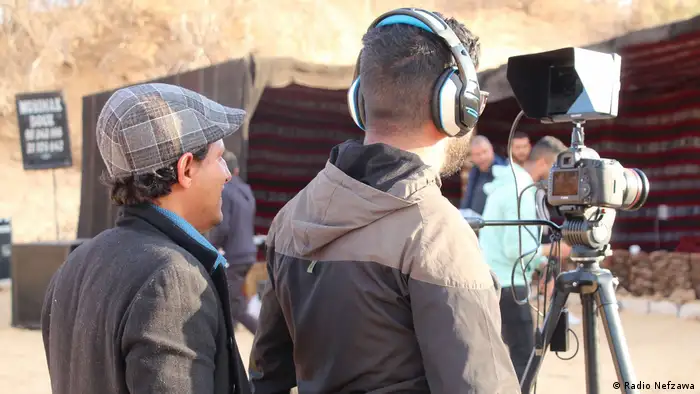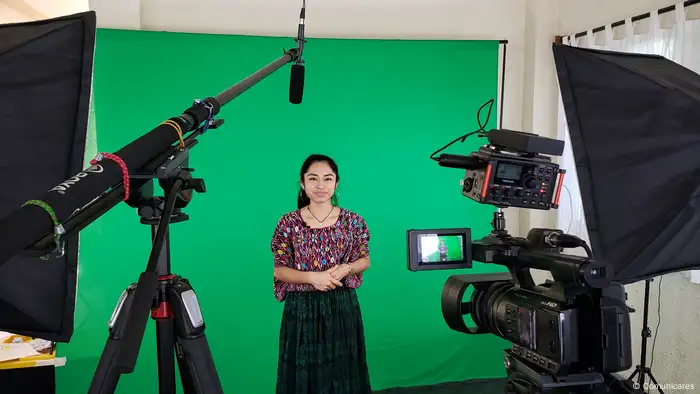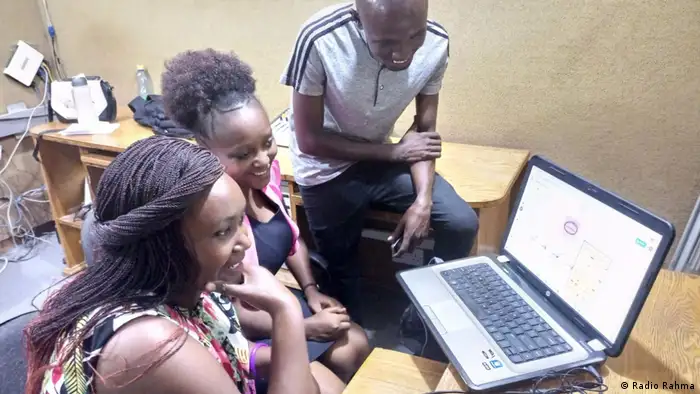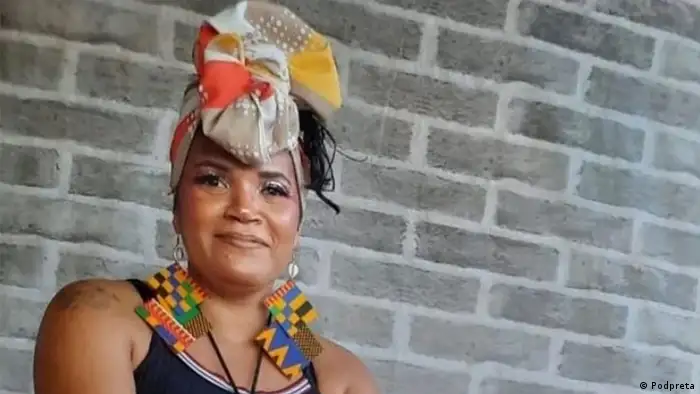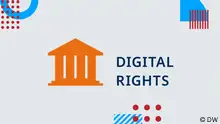On Thursday, April 11, the world of available open-source tools for journalists will be enriched by a new app called Colmena. Behind this name is a digital newsroom that can run on almost every mobile device and allows for collaborative audio and podcast productions, even with limited Internet connectivity. Users can record interviews, edit them, and share them in the cloud.
You might have found your newsroom struggling to produce stories during the COVID-19 pandemic, or perhaps you face Internet shutdowns or frequent power cuts. Luckily, these situations are exactly what Colmena was created for – or rather "co-created for."
A collaborative tool from the start
From the very beginning in early 2021, Colmena has been a collective effort from DW Akademie and three partner organizations – REDES AC, Tanda.net and Cambá – as well as input from over 30 media organizations from the Global South and Ukraine. It has been designed to help local and community media organizations to successfully produce stories, despite any technological hurdles they might face.
"To be part of this creation process was and is one of the coolest things I have experienced," saysMichelle Nogales from the feminist online magazine Muy Waso in Bolivia. "In times of a roaring global pandemic the work in this tool, together with other media partners from Guatemala, Peru and even some countries from Africa, created a sense of belonging and a common perspective."
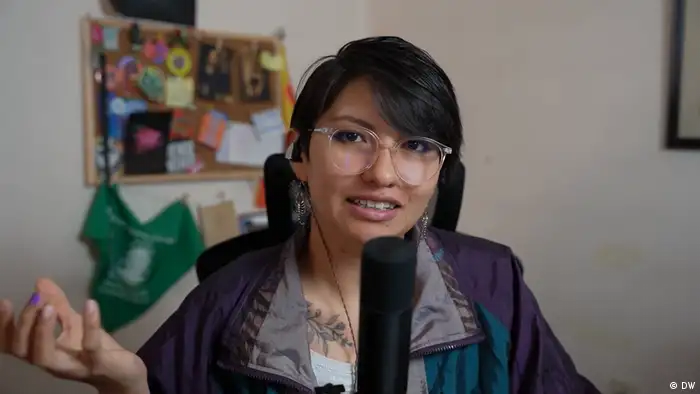
Michelle Nogales has used the software to produce podcasts for her feminist media outlet Muy Waso
A global approach to local journalism
Colmena is Spanish for beehive, a metaphor for busy, collaborative tinkering. With the support of software developers and tech consultants from Argentina, Brazil, Spain, Tunisia and Ukraine, the early framework turned into the first beta version in less than twelve months.
"Colmena boosted our interest in podcast productions," says Nogales. "We were part of the early testing group and, when we managed to produce 2 or 3 episodes for the first time, this felt great. Colmena is really a good tool to do recordings and basic editing."
More than 11,000 kilometers away from Muy Waso’s homebase in Cochabamba, Ken Wekesa, a radio producer and podcaster from Kenya echoes the enthusiasm. "Colmena has revolutionized our content production and distribution and provided a safe space for the journalists of our radio station Pwani FM to collaborate online."
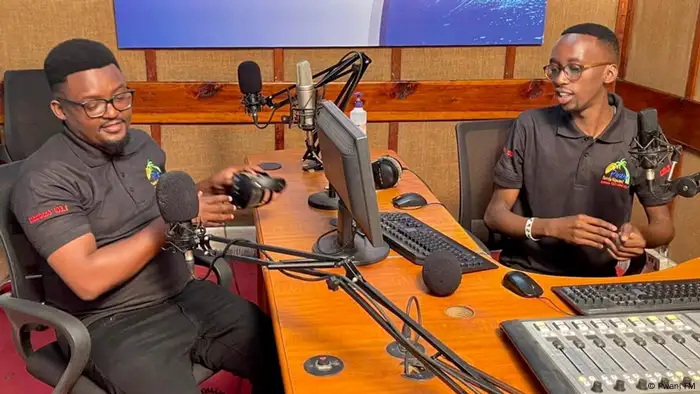
Pwani FM studio not only developed the software, but uses it in their journalistic reporting
Reporting from any field
While the staff of the Pwani FM, a local broadcaster from Mombasa, use a variety of production tools, Wekesa has promoted the use of Colmena by their field reporters. "It has definitely improved our news gathering and participatory productions in rural areas with poor Internet connection."
Up until now, Pwani FM had been somewhat limited in their implementation, as the team was beta testing the software. They will be happy to know that the full Colmena software is currently available, which is now scalable and has a new, handier user interface.
Whoever is interested in installing the digital newsroom on a server can download the well-documented source code for free from Gitlab.
Providing reliable service
In parallel, DW Akademie and its partners are also hosting Colmena as a reliable service (SaaS) for interested media outlets, meaning they will host the software on servers to allow media organizations to access it.
"We are prepared for the onboarding of new users in the next days and weeks," says Neto Licursi from the Argentinian cooperative Cambá who leads the development and maintenance of the project. The service will be available to DW Akademie members and its partners for capacity-building and media development. Yet other outlets can request accounts, as well.
"With Colmena, we have opted for an open source approach, because such tools can only be sustainable if they are conceived and maintained as an open innovation," says David Olmos, head of DW Akademie’s South America Unit. "This is why, together with the launch of the software, we also celebrate the start of the Colmena partner consortium."
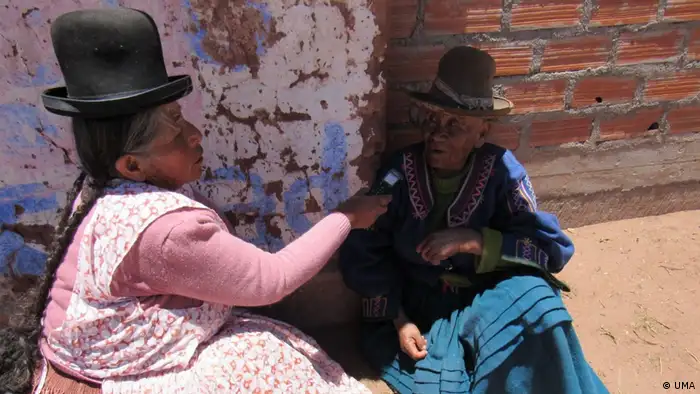
Colmena was designed for newsrooms with limited internet connectivity
Olmos went on to express his approval that all four organizations decided to formalize their collaboration by creating a consortium to maintain the source code and to provide opportunities for local and community media to access the software through the Saas.
A chance to share experiences
In the coming months, the consortium will focus its work on fostering the user community and fundraising for future development and setting up regional hubs. A shared vision of media outlets like Muy Waso and Pwani FM is to further integrate Colmena into existing and emerging publishing platforms.
Yet the consortium will not stop there. Wekesa also dreams of a shared space "to collaborate with other community radio stations globally."
-
A glance in the beehive: How community media in Latin America and Africa work with the Colmena app
Strong together: Pod´Da-lhe, Brazil
The Brazilian collective Jovem Tapajônico’s podcast initiative Pod’Da-lhe focuses on rainforest preservation. They use Colmena’s audio recording tool for interviews with women and indigenous youth so that the river communities can reflect on their societies. At the same time, the content can be shared with other community media in the blink of an eye.
-
A glance in the beehive: How community media in Latin America and Africa work with the Colmena app
Investigative, diverse, feminist: Muy Waso, Bolivia
Muy Waso is the first online magazine of its kind in Bolivia, reaching a broad audience across borders with its reports and podcasts. Colmena combines the necessary steps to do this: pulling articles together, recording audio and processing as a team. This also enables broad participation and diversity in the production process. For co-founder Michelle Nogales, this is "journalism’s future."
-
A glance in the beehive: How community media in Latin America and Africa work with the Colmena app
A voice for everyone: La Voix du Paysan, Burkina Faso
The community radio La Voix du Paysan is more than just "a voice for farmers." It's a central gathering place for regional information. The program centers on what is important to the rural population. Colmena enables expanding the range of topics even more: the station uses the app for exchanging material and mutual production with its partner station Radio Vénégré.
-
A glance in the beehive: How community media in Latin America and Africa work with the Colmena app
Programs for young and old: Radio Vénégré, Burkina Faso
In Burkina Faso, even the village chief (seated) has become a radio producer. "We all work on the shows at Radio Vénégré," says program director Awa Ouedraogo. Editing has been too complicated, she says, so developing an editing program for cell phones was really important. With Colmena, she can now share interview excerpts more effectively via the mobile Internet.
-
A glance in the beehive: How community media in Latin America and Africa work with the Colmena app
Against forgetting: Unión de Mujeres Aymaras del Abya Yala (UMA), Peru
"We want to preserve our language," says Yeny Paucar. The women living in the Aymara community have been learning how to use new communication technology for 34 years so as to share their culture far and wide. Radio plays an important role. Paucar and her colleagues use Colmena to record their stories in their language, editing and sharing the content using a simple cellphone.
-
A glance in the beehive: How community media in Latin America and Africa work with the Colmena app
Church radio for everyone: Radio Amani, Kenya
The Catholic community radio station Radio Amani wants to be there for everyone in Nakuru County, and also to mirror its diversity. The opinions voiced in the programming are just as diverse as the music. As part of the Colmena network, the radio producers can access a databank of license free music which is implemented and managed by the users.
-
A glance in the beehive: How community media in Latin America and Africa work with the Colmena app
Radio like a bouquet: Pwani FM, Kenya
Pwani FM has it all: from youth radio to classic news programming to live Bango music shows. The diversity is limitless, not unlike Colmena’s features, which the team use for production and communication. With easy use in the Kiswahili language, the moderators Ken1GB and Gates Mgenge are able to finalize things quickly.
-
A glance in the beehive: How community media in Latin America and Africa work with the Colmena app
Local language on the World Wide Web: Radio Ada, Ghana
Every day, Olivia Serwa Waree from Radio Ada in Ghana translates international news to the local language, Dangme. "I especially want to meet the needs of women from the communities," she says. She uses the Colmena toolbox to put content on social media platforms.
-
A glance in the beehive: How community media in Latin America and Africa work with the Colmena app
Always on site and close to the people: Radio Nefzawa, Tunisia
Radio Nefzawa broadcasts out of Kebili, a remote region in Tunisia, and is also experimenting with video formats. The demand for independent information is big. In order to collaborate with community reporters, they use Colmena. The automatic upload via the cloud server makes it easy to share their stories from the rural outskirts directly with the station.
-
A glance in the beehive: How community media in Latin America and Africa work with the Colmena app
Open to the world and new channels: Radio Sayaxché, Guatemala
The local station Radio Sayaxché is very interested in exchanging programs with community media from other regions and countries and trying out new formats on different channels. Colmena enables the radio's staff to broadcast content independently, as well as to share that with team members and to work more easily together – and this despite weak internet connections in the Amazon region.
-
A glance in the beehive: How community media in Latin America and Africa work with the Colmena app
Impulses within and outward: Radio Rahma, Kenya
Radio Rahma broadcasts live out of Mombasa and provides the region with current podcasts. Colmena supports the team in its work, allowing them to exchange knowledge and ideas, and not just internally, but rather with other radio stations, too. Colmena increases the possibilities for the station to connect within and outside the region, and the digital cooperation leads to new impulses.
-
A glance in the beehive: How community media in Latin America and Africa work with the Colmena app
Unheard stories: Podpreta, Brazil
In northern Brazil, Rejane and her colleagues Quezia, Lica and Janna record podcasts. As Podpreta, they use Colmena as a production tool. It helps them to better coordinate and to be able to work virtually. With the audio recording tool, they give a voice to Black women in the Amazon region and report on their little known realities of life.
For Muy Waso, they imagine "a platform that brings together productions from rural and indigenous territories with content that responds to our realities." Nogales went on to say that "there is great potential, to glue together people with accessible low-tech tools. We believe in the potential of Colmena."
If you'd like to know more about Colmena, join us for the launch at 2 pm UTC on Thursday, April 11.
Colmena was developed by DW Akademie and its partners and is supported by the German Federal Ministry for Economic Cooperation and Development (BMZ).

